Room temperature butter - does it really matter? This post explains the importance of using room temperature butter, how to know when it's at the correct temperature, and why it's important.
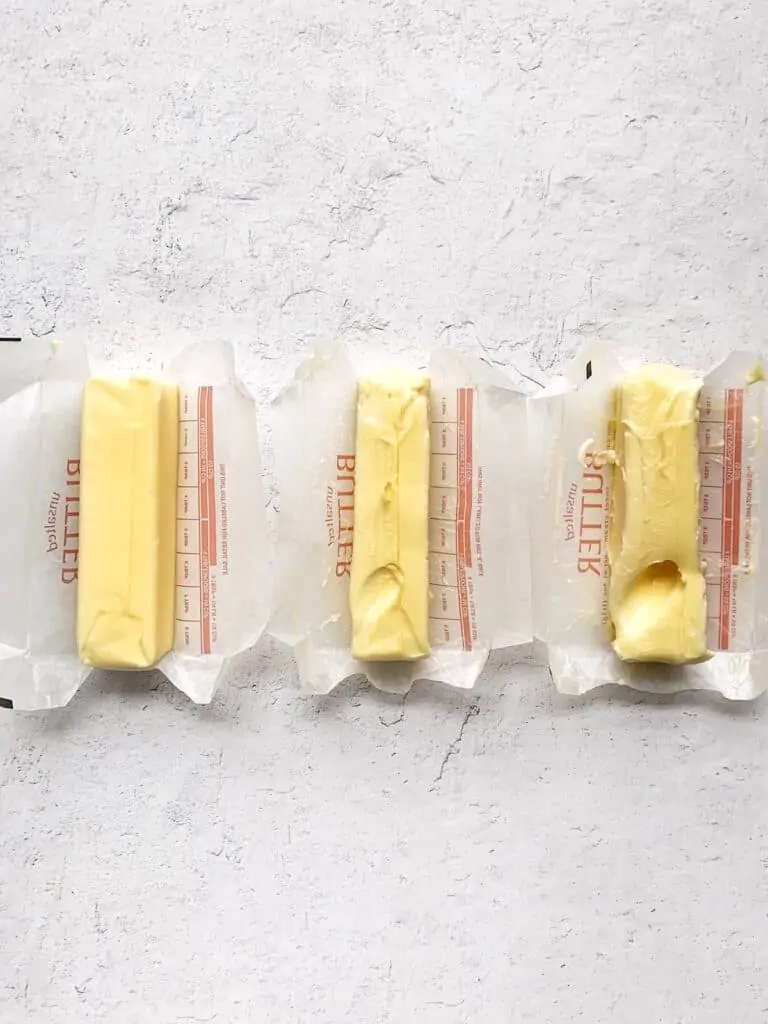
This post contains affiliate links. As an Amazon Associate, I earn from qualifying purchases.
What is room temperature butter?
Room temperature butter is pretty much exactly what it sounds like - butter that is at room temperature! This means your butter should be between 65-70°F. Contrary to popular belief, the butter will actually still feel slightly cool to the touch and should not be soft and mushy. If you have a kitchen thermometer, give your butter a probe to see what it's really reading.
Why does butter have to be at room temperature?
Because science says so! Most baking recipes begin with a creaming process - combining the butter and sugar. This process is meant to incorporate air to aid in the rise of baked goods. Fat (i.e. butter) is capable of trapping air, which is how this process occurs and helps to leave you with a light and fluffy cake.
The reason room temperature butter is important is because room temperature ingredients combine and homogenize best at room temperature and is what will provide an evenly textured bake (like this batter for Spiced Pear Cake with Brown Butter Frosting).
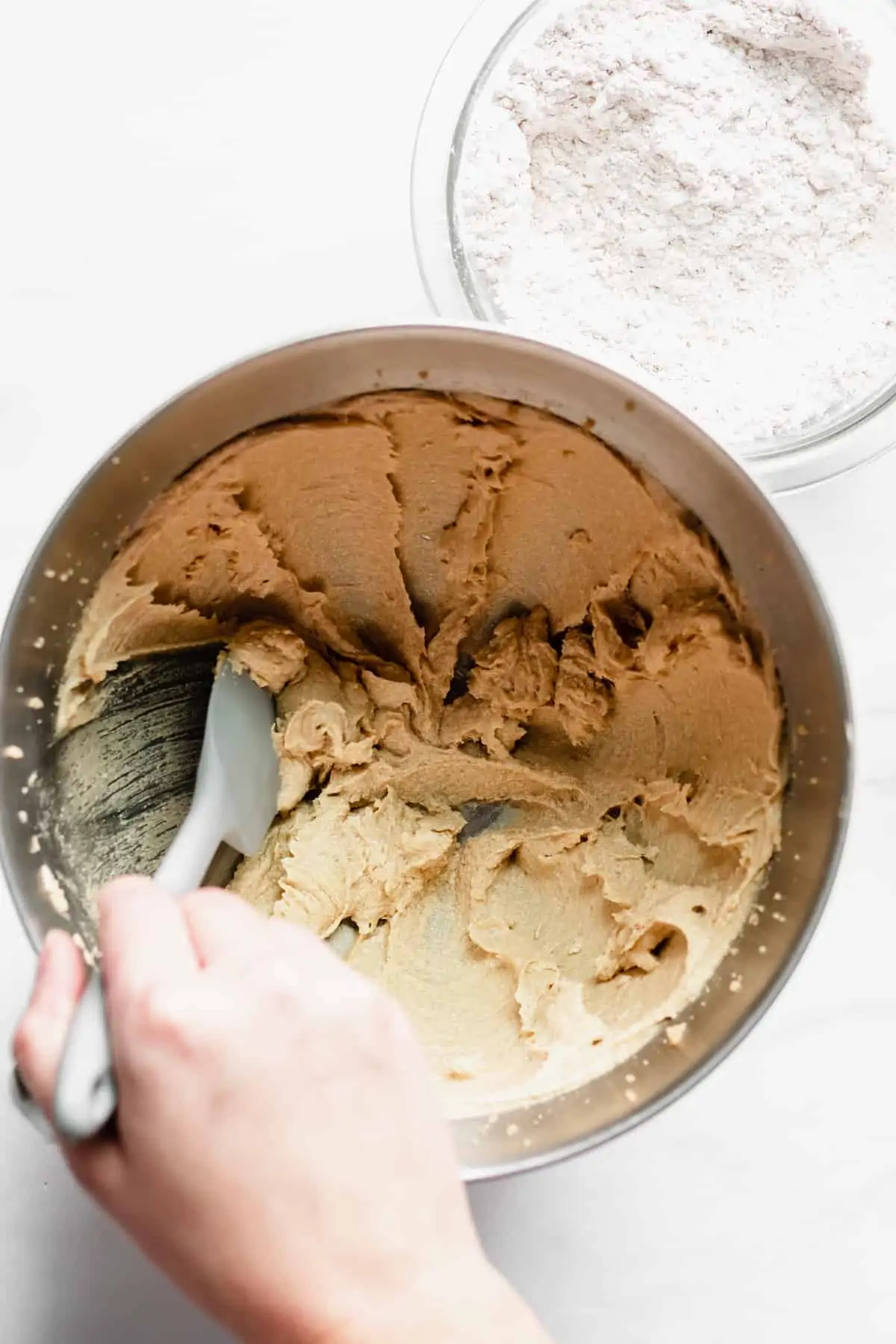
This applies to all ingredients you use - if the ingredient is listed to be room temperature, PLEASE make sure it's at room temperature. This allows for a smooth batter, dough, icing, etc. Cold ingredients don't emulsify properly, and it can leave you with lumps, pockets, or oily bakes.
Softened vs room temperature
Is there a difference between softened butter and room temperature butter? Nope. These are used interchangeably, and will sometimes even say "unsalted butter, softened to room temperature."
What should it feel like?
Room temperature butter will still feel slightly cool. Remember, this is 65-70°F. Some people even say that 70°F is too warm, but I have not found an issue with this temperature.
If you don't have a thermometer, a good way to check is to press one finger into the top of the butter. It should indent slightly, but your finger should not super easily push through the butter, and definitely should't make it the whole way through to the bottom without applying much pressure.

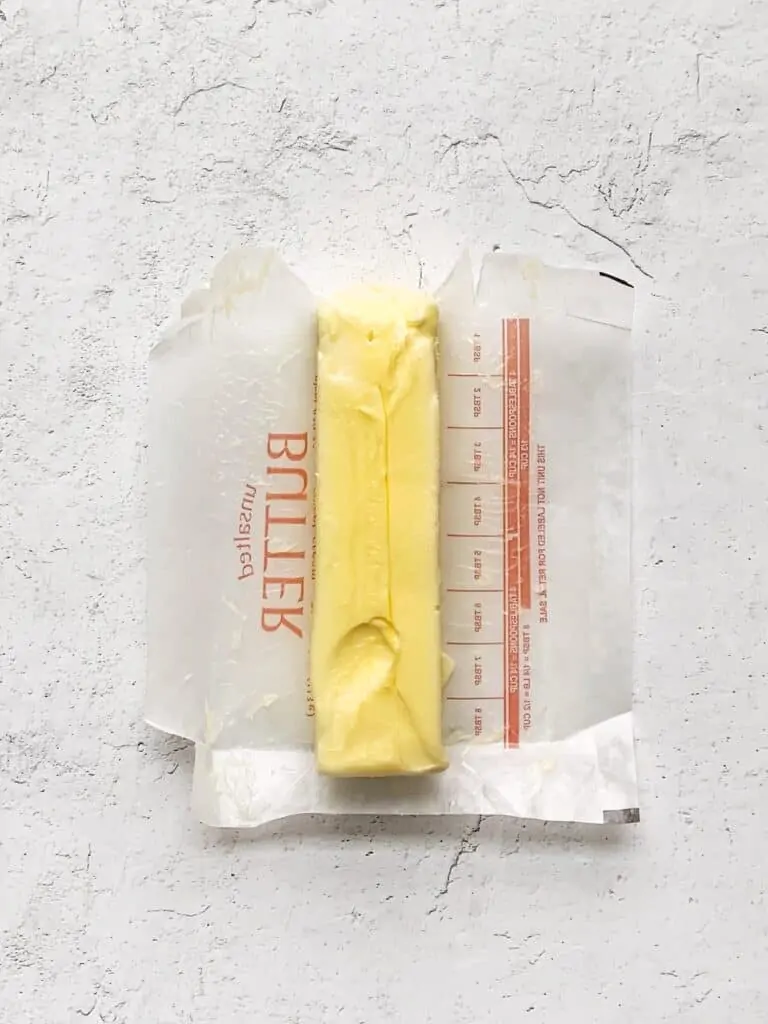
The pictures above show the correct consistency and temperature and how to test. This butter read 67°F on a thermometer.
The pictures below depict butter that is too soft to use in a baked good. This butter read at 75°F. You can also see that this one is too soft, as it has a bit of a shine to it and some of the butter pulled off during the unwrapping process.
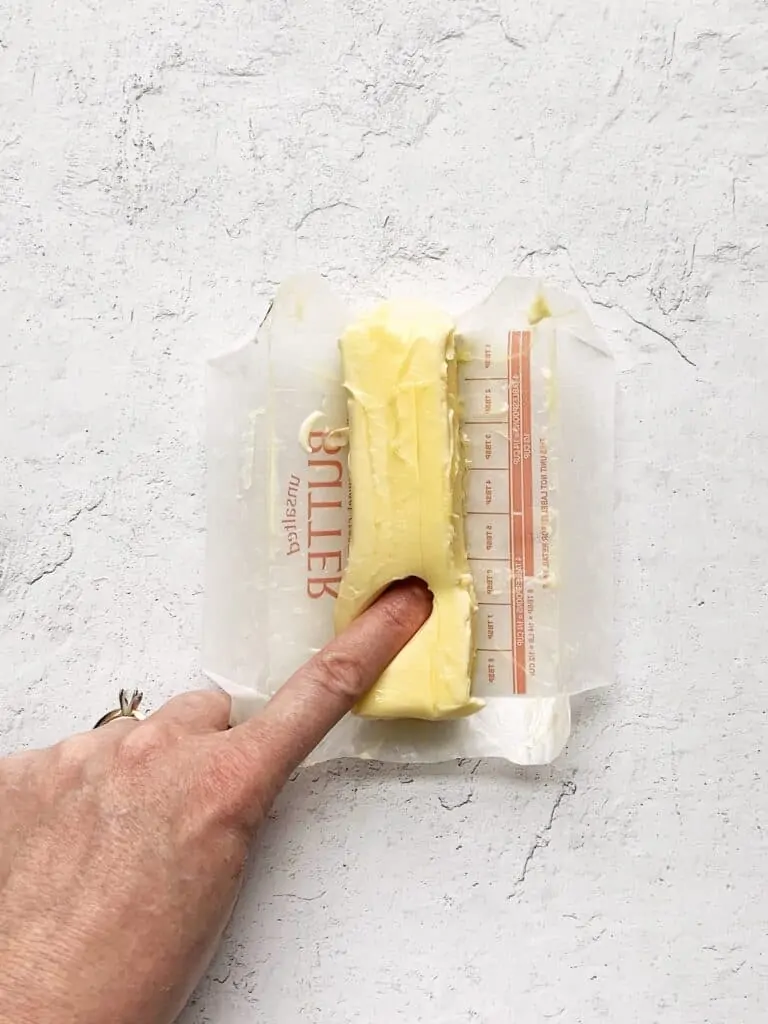
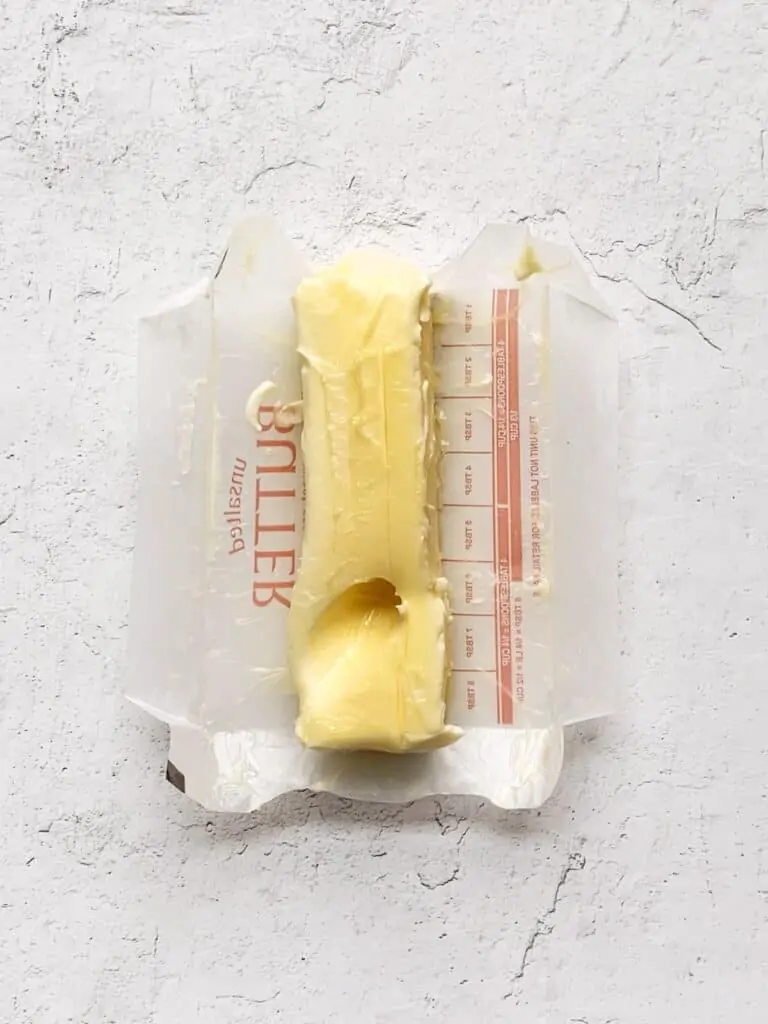
How long does it take for butter to get to the correct temperature?
In most kitchens, butter will come to temperature in 1-2 hours. If you have a particularly warm kitchen or household, it may be closer to 30 minutes. If your kitchen is on the colder side, you may have to "force" it to the correct temperature - continue reading the next section!
How to soften cold butter quickly
There are a multitude of ways to quickly bring cold butter to room temperature. Here, I'm providing the top three methods I use when I'm short on time or forgot to take my butter out of the fridge to come to temperature.
- Cut up the amount of butter needed into tablespoon pieces and spread them out on a large plate. Heat 2 cups of water in the microwave (in a glass measuring cup or bowl) for 2-3 minutes until it's very hot. Remove the water and place the plate with butter in the microwave and close the door. DO NOT turn on the microwave, just let it sit for about 7 minutes and the residual heat will bring the butter to temperature.
- Place a stick of butter (still in the wrapper) in a ziplock bag and close tightly, removing all air. Add warm water (not hot) to a bowl or liquid measuring cup, place the butter inside, and let it hang out for 4-5 minutes. If you need to soften more than one stick of butter, use separate bags and bowls.
- Put a stick of butter in a ziplock bag and throw it in your sweatshirt pocket! Yes, I'm serious. I probably use this method the most... Your body heat will have the butter softened and ready for use in about 20 minutes. I'll do this while I'm prepping ingredients and then my butter is ready exactly when I am!


Leave a Reply